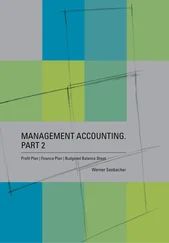Stuart Warner - Finance Basics
Здесь есть возможность читать онлайн «Stuart Warner - Finance Basics» — ознакомительный отрывок электронной книги совершенно бесплатно, а после прочтения отрывка купить полную версию. В некоторых случаях можно слушать аудио, скачать через торрент в формате fb2 и присутствует краткое содержание. Жанр: unrecognised, на английском языке. Описание произведения, (предисловие) а так же отзывы посетителей доступны на портале библиотеки ЛибКат.
- Название:Finance Basics
- Автор:
- Жанр:
- Год:неизвестен
- ISBN:нет данных
- Рейтинг книги:3 / 5. Голосов: 1
-
Избранное:Добавить в избранное
- Отзывы:
-
Ваша оценка:
- 60
- 1
- 2
- 3
- 4
- 5
Finance Basics: краткое содержание, описание и аннотация
Предлагаем к чтению аннотацию, описание, краткое содержание или предисловие (зависит от того, что написал сам автор книги «Finance Basics»). Если вы не нашли необходимую информацию о книге — напишите в комментариях, мы постараемся отыскать её.
Finance Basics — читать онлайн ознакомительный отрывок
Ниже представлен текст книги, разбитый по страницам. Система сохранения места последней прочитанной страницы, позволяет с удобством читать онлайн бесплатно книгу «Finance Basics», без необходимости каждый раз заново искать на чём Вы остановились. Поставьте закладку, и сможете в любой момент перейти на страницу, на которой закончили чтение.
Интервал:
Закладка:
Keeping accurate records of business transactions is valuable in many ways.
1.5 Know what a finance department does
A finance department manages the financial operations of a business and provides information and advice to the rest of the business. All areas of a business will have some contact with the finance department. You should understand how a typical finance department operates, and who does what in it.
The four key responsibilities of a finance department are:
Ensuring that a business has sufficient money
Recording and controlling transactions within a business
Providing information internally to managers to help with planning, decision-making and control
Reporting information externally to stakeholders such as shareholders and tax authorities
The finance director. The finance department is usually headed up by a finance director (FD) or chief financial officer (CFO) who, as a board member, is responsible for ‘financing and investment strategy’ and making sure it supports the ‘business strategy’.
“My money goes to my agent, then to my accountant and from him to the tax man” Glenda Jackson, English actress
The FD also runs the finance department, which may include the following roles, depending upon the size and complexity of the business:
The financial controller. This person has responsibility for recording, analysing and summarizing financial transactions. In particular the financial controller will produce the financial statements. The financial controller may manage a number of accounting staff who look after areas such as sales invoicing; debt collection; purchases; making payments; payroll; fixed assets; and taxation.
The management accountant. He or she assists management with planning, decision making and control. The management accountant will prepare both regular and ad-hoc reports. These reports will include ‘key performance indicators’ (KPIs) which measure the performance of individuals, departments and other critical areas of the business. In particular the management accountant will manage the budgeting process.
The treasurer. Found in larger businesses, the treasurer has responsibility for financing the business and implementing the financing and investment strategy. In particular the treasurer will liaise with banks, manage cash flow and deal with foreign currency exchange.
The finance department is a key function which should contribute to the success of the business.
1.6 Understand the key financial systems
Irrespective of size, businesses need financial systems to record and control business transactions, especially where money comes in or goes out of the business. System controls should prevent, or detect and correct errors as well as minimize the risk of fraud. You need systems for sales, purchases, payroll and, especially, for cash transactions.
Credit sales to customers. There should be a clear link between credit limits, orders, issues from stock, delivery, invoicing and collecting debts. Supporting documents should be matched at each stage, so customers receive what they order, are correctly invoiced and ultimately pay. The system should keep track of what is owed by each customer and when they are expected to pay.
Non-credit sales to customers. Non-credit sales will often follow the same system and controls, with instant payment recorded against the invoice.
Cash transactions. Although the term ‘cash’ is widely used in finance, very few businesses actually handle cash. Even retailers have a large proportion of customers using payment cards. For many businesses the only cash will be petty cash. Nevertheless, wherever cash is involved, there should be tight controls and links to authorized supporting documents.
Purchases of goods for resale and stock management. There should be tight controls over purchases, including a clear link to authorized orders and checks that goods or services have actually been received, before any payments are authorized. There should also be links to a stock management system, where applicable. There should be additional controls that purchases are made from approved suppliers at agreed prices. Purchasing systems should monitor payment due dates so businesses can take full advantage of supplier credit.
Payments for expenses and capital expenditure. The same system and controls will often be used for expenses such as rent and utility bills. High-value capital expenditure will have additional authorization controls.
Payroll. Payroll is typically the largest and most frequent expense and should have tight controls and segregation of duties. There should be links back to personnel records, authorized pay rates and, where applicable, timesheets. As an additional control the payroll system is often separate to the other systems.
You must record and control business transactions and maintain clear links back to authorized documentation.
1.7 Differentiate financial and management accounting
There are different types of financial information and reports produced by the finance team, which generally fall under two categories: financial accounting and management accounting.
Financial accounts
Purpose. Financial accounts are used to report the financial results of a business. They are produced at least annually, mainly for the benefit of external users, such as shareholders.
Focus. The historical financial results of a business.
Scope. The financial results of the whole business.
Frequency. Prepared at least annually, although some companies prepare ‘interim’ financial reports every six months.
Requirement. Financial accounts are a legal requirement for regis-tered companies.
Format. There are financial accounting standards which govern the format and contents of financial accounts.
Accuracy. Financial accounts are required to show a ‘true and fair’ view. For practical purposes this means that they should be as accurate as possible and not misleading. ‘Accuracy’ will depend upon the size of a business.
Management accounts
Purpose. Management accounts provide financial and non-financial information and are used to help managers make informed business decisions. They are usually confidential and not released outside the organization.
Focus. Use past and present information to make decisions about the future.
Scope. Can report on products, customers, departments, divisions or the whole business.
Frequency. Produced whenever required – usually at least monthly.
Requirement. There are no legal requirements for management accounts. Although, in practice, some external investors, such as banks, may insist on regular management accounts as a condition of funding.
Format. There are no standard formats or rules for management accounts but some popular established techniques are used, for example, the calculation of profit margins and other financial ratios.
Accuracy. Management accounts are required to be as accurate as possible as they are used to make critical business decisions. At the same time, as management accounts are used to predict an uncertain future, they can include reasonable approximations.
Financial accounts report historical data. Management accounts help managers make critical decisions.
Accounting fundamentals
You have to walkbefore you can run. This chapter explains the basic accounting fundamentals which are essential knowledge for anyone in business. The first step is to understand the language of finance used by accountants. Accountancy is notorious for jargon and I will start the chapter by explaining some of the more commonly used terms. I will then move on to some of the most basic financial concepts.
Читать дальшеИнтервал:
Закладка:
Похожие книги на «Finance Basics»
Представляем Вашему вниманию похожие книги на «Finance Basics» списком для выбора. Мы отобрали схожую по названию и смыслу литературу в надежде предоставить читателям больше вариантов отыскать новые, интересные, ещё непрочитанные произведения.
Обсуждение, отзывы о книге «Finance Basics» и просто собственные мнения читателей. Оставьте ваши комментарии, напишите, что Вы думаете о произведении, его смысле или главных героях. Укажите что конкретно понравилось, а что нет, и почему Вы так считаете.












